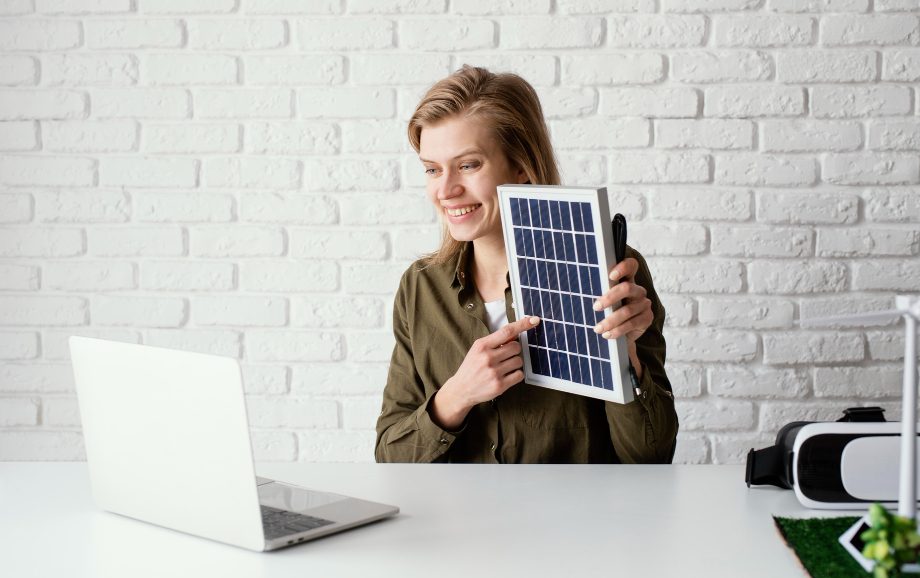Are you tired of rising electricity bills? Are you looking for ways to save money while also reducing your carbon footprint? Look no further than solar energy – a sustainable alternative that is taking the world by storm.
Nowadays, where the cost of electricity continues to rise, incorporating solar energy into homes and businesses has become crucial. In fact, statistics show that by installing solar panels, individuals and companies can save up to 20% on their electricity bills annually. With the increasing global concern about climate change, solar energy has emerged as a popular and eco-friendly choice.
By using the power of the sun, we not only reduce our dependence on traditional energy sources but also significantly lower our carbon emissions. In this article, we will explore how to reduce electricity bills through solar energy.
Understanding Solar Energy
Before we discuss how to reduce electricity bills with solar energy, it is important to have a basic understanding of how solar energy works. Solar panels, also known as photovoltaic (PV) panels, convert sunlight into electricity. These panels consist of numerous solar cells that contain semiconductors, such as silicon. When sunlight strikes the solar cells, it excites the electrons, generating an electric current. This electricity can be stored in batteries or used immediately to power appliances, lighting, and other electrical devices.
Assessing Energy Consumption and Requirements
The first step towards reducing electricity bills through solar energy is to assess your energy consumption and requirements. By evaluating your electricity usage, you can determine the number and size of solar panels needed to offset your energy needs.
- Step 1: Gather your electricity bills from the past year and calculate the average monthly usage.
- Step 2: Identify any potential changes in energy usage, such as adding new appliances or increasing the size of your household.
- Step 3: Use online solar calculators or consult with a professional solar installer to determine the number of solar panels required based on your energy consumption.
For example, if your average monthly usage is 500 kWh, you may need a solar system that can generate 500 kWh of electricity per month to offset your entire energy consumption.
Choosing the Right Solar Panels
Selecting the right solar panels is crucial in reducing electricity bills effectively. Several factors should be considered when choosing solar panels, including efficiency, quality, durability, and warranty.
- Step 1: Research different types of solar panels, such as monocrystalline, polycrystalline, and thin-film, and compare their efficiency ratings.
- Step 2: Consider the quality and durability of the panels by researching the manufacturer’s reputation and reading customer reviews.
- Step 3: Choose solar panels with a substantial warranty to ensure long-term performance and protection.
For example, you might opt for monocrystalline solar panels with a high efficiency rating and a 25-year warranty for optimal performance and reliability.
Installing the Solar Energy System
Once you have chosen the appropriate solar panels, the next step is to install the solar energy system.
- Step 1: Decide on the installation location, considering factors such as roof orientation, shading, and available space.
- Step 2: Hire a professional solar installer or consult with an energy advisor to assess the feasibility of the installation location and determine the appropriate mounting structures.
- Step 3: Work with the installer to ensure accurate positioning and wiring of the solar panels, maximizing sunlight exposure and optimizing energy conversion.
For example, the installer will survey your roof, determine the best placement for the solar panels, and securely mount them with the necessary electrical connections.
Connecting to the Power Grid
Most solar energy systems are connected to the power grid, allowing for a consistent electricity supply.
- Step 1: Research and understand the net metering policies and requirements in your area.
- Step 2: Contact your local utility company to initiate the process of interconnecting your solar energy system with the grid.
- Step 3: Install a bidirectional meter that tracks both the energy consumed from the grid and the excess energy sent back to the grid.
For example, during sunny periods when your solar panels produce more electricity than you consume, the excess energy is fed back into the grid, earning you credits that can be used to offset future electricity bills.
Optimizing Energy Consumption
In addition to installing solar panels, adopting energy-efficient practices can further reduce electricity bills.
- Step 1: Replace old appliances with energy-efficient models that have high energy star ratings.
- Step 2: Opt for LED lighting that consumes significantly less energy than traditional incandescent bulbs.
- Step 3: Utilize smart home technologies, such as programmable thermostats and energy monitoring systems, to automate and monitor energy usage.
For example, you can program your thermostat to optimize temperature settings when you are away from home, reducing unnecessary energy consumption.
Maintaining and Monitoring the System
Regular maintenance and monitoring of the solar energy system are essential to ensure its optimal performance and longevity.
- Step 1: Keep the solar panels clean and free from dirt, debris, and snow accumulation.
- Step 2: Monitor the system’s performance through software or monitoring tools provided by the solar panel manufacturer.
- Step 3: Schedule regular inspections and servicing of the solar inverters by qualified professionals.
For example, cleaning the panels regularly and identifying any performance issues promptly can help maximize the efficiency and lifespan of the solar energy system.
Conclusion
Switching to solar energy is an effective way to reduce electricity bills while contributing to a sustainable future. By assessing energy consumption, choosing the right solar panels, installing the system correctly, connecting to the power grid, optimizing energy consumption, and maintaining the system adequately, individuals and businesses can significantly decrease their reliance on traditional electricity sources and unlock long-term cost savings. Embracing solar energy not only benefits the environment but also offers financial advantages, making it a win-win solution for reducing electricity bills.

